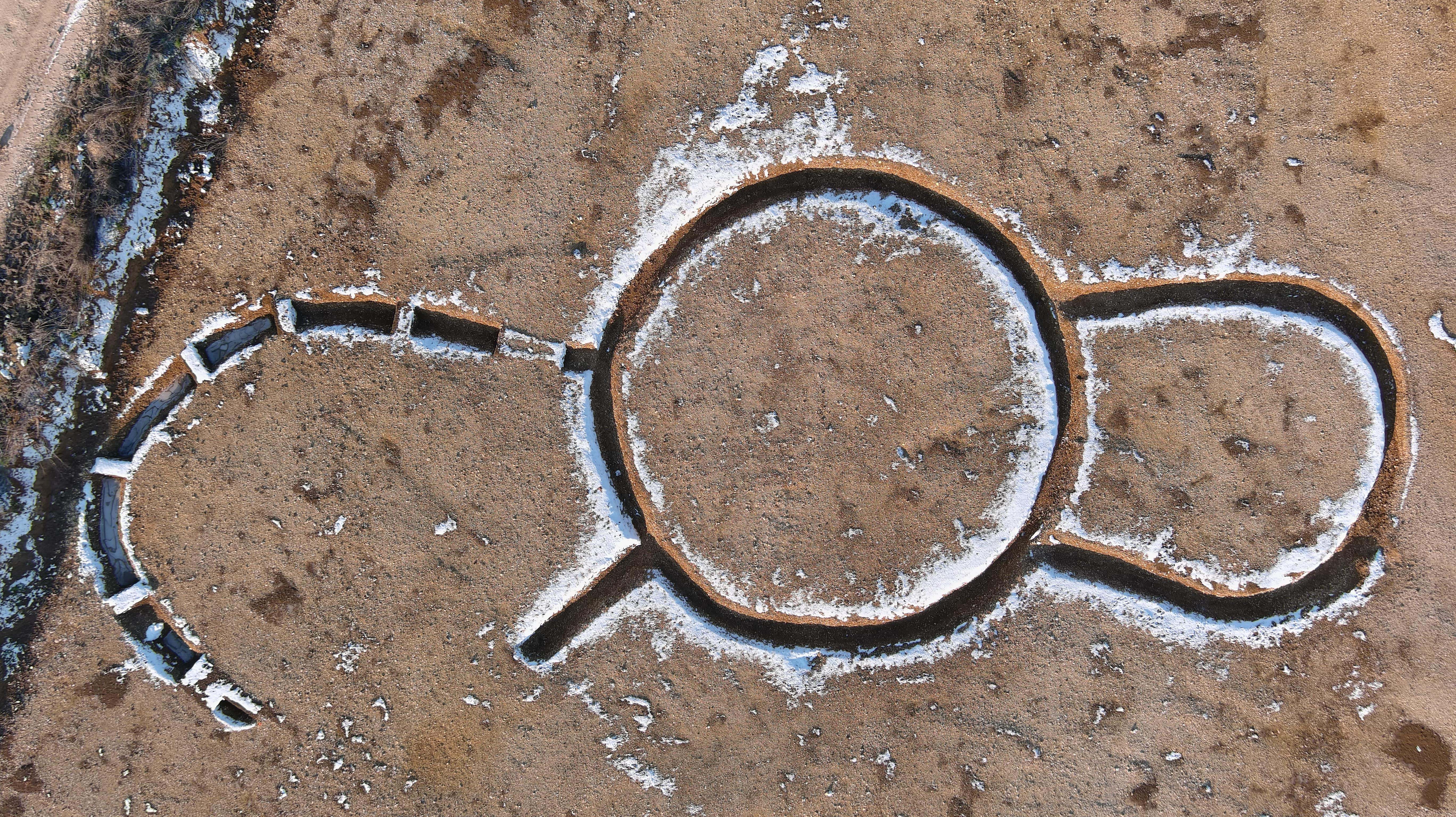Excavations carried out by a team of French archaeologists in Marliens, near Dijon, France, have revealed a series of occupations ranging from the Neolithic to the Iron Age.
The oldest occupation of the three areas excavated, with a total surface area of 60,000 m², is characterized by a monument with an unusual formation, made up of three interconnected enclosures, with a circular enclosure 11 metres in diameter at its center.
To the north, a horseshoe-shaped enclosure, 8 meters long, adjoins the circular enclosure and, to the south, another open enclosure adjoins the central enclosure.
The presence of a layer of gravel in the fill of the two side enclosures indicates the existence of a palisade. Several stratigraphic sections indicate that the three enclosures are contemporary.
This type of monument seems to have no precedent and the dating is still uncertain, but the only artifacts found in the trenches are carved flint stones, suggesting a chronocultural attribution to the Neolithic. Radiocarbon analyses are currently underway to determine the precise chronology of this monument.
Among the objects found were seven flint arrowheads, two archer's bracelets, a flint lighter and a copper alloy dagger. One of the bracelets contained residues of "iron oxide" corresponding to pyrite, an essential element for igniting fire.
According to the press release from the Institut National de Recherches Archéologiques Préventives (INRAP), which conducted the investigation, this series of objects often accompanies a burial, but due to their stratigraphic position at the base of the site, this hypothesis could not be confirmed.

Analysis of the composition of the dagger's copper alloy should help determine its origin and provide information on the trade of the time.
Palynological and carpological analyses of the clay layers at the bottom of these structures provide abundant information about the natural environment and landscape of the valley in the first half of the second millennium BC.
Between 1500 and 1300 BC, a necropolis was built on the plain, covering 6000 m², with five circular enclosures, four open and one closed. The acidity of the soil prevented the preservation of unburnt bones, so no complete burials were discovered.
However, traces of burials and a funeral pyre were identified in the ditches of the largest open enclosure, 24 meters in diameter.
The dating of these enclosures was based on five copper alloy pins and a necklace with around forty amber beads found in the ditch. The few ceramic fragments found in the other enclosures confirm the dating of this necropolis and the contemporaneity of the various enclosures.
One of these enclosures corresponds to a necropolis located about 400 meters from the one mentioned above, where six incinerated remains dating from the Iron Age were found. The urns, covered by a lid, contained a single bone deposit, sometimes accompanied by ornaments.
The excavation ended in February and various studies are now underway - which, together with paleoenvironmental studies, may shed more light on the evolution of human activity and environmental interaction in this region, making a significant contribution to our understanding of prehistoric Europe.




